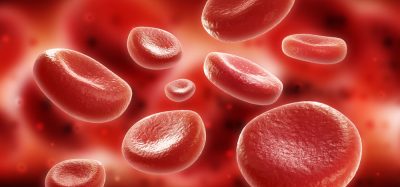Transforming health technology assessment: the NICE perspective
Posted: 3 July 2015 |
Without constantly examining the systems that underpin what we as an organisation do, opportunities will be missed and performance will stagnate…
Sir David Brailsford was the architect of British cycling’s transformation from also-rans to world beaters. His philosophy was based on the principle that “if you broke down everything you could think of that goes into riding a bike, and then improved it by 1%, you could get a significant increase when you put them all together”. He was noted for his emphasis on constant measuring and monitoring of key statistics such as cyclists’ power output and developing training interventions that target any observed weaknesses. In other words, it was about focusing on and refining the design, operation, control and optimisation of physical systems and processes that, collectively, transforms inputs into outputs. Put simply, it was about affecting the way in which a complex system behaves as a whole – systems engineering.
So what has this got to do with the UK’s National Institute for Health and Care Excellence (NICE), or indeed with healthcare in general? The simple answer is: everything, because without constantly questioning and examining the processes and systems that underpin what we as an organisation do, opportunities for improvement will be missed and performance will stagnate. It also makes it far less likely that changes in the environment in which we operate can be accommodated successfully. When you consider the pivotal role NICE plays in ensuring the health services in England and Wales get value for the money and patients get the best possible treatments, the need for NICE to remain relevant, responsive and at the leading edge of health technology evaluation cannot be overstated.
Finite budget
The health technology assessment picture at NICE is necessarily a complex one. It is made up of many activities and initiatives which mesh together to form a coherent and powerful whole. NICE’s advisory committees consider a wide range of evidence and information when appraising technologies, and we are always looking at how to improve the quality of these inputs with the ultimate aim of getting innovative, good value technologies to patients more quickly. In the UK, as in many other countries, healthcare funding is finite. At the same time, of course, peoples’ expectations of the healthcare they should receive is not constrained in the same way. Add to the mix that people are living longer – often with long term health conditions like diabetes and heart disease – and the picture gets even more complicated. Within this febrile atmosphere one of NICE’s jobs is to work out the clinical and cost-effectiveness of drugs and treatments to ensure the health services in England and Wales get value for the money they spend and patients get the best possible treatments. Allied to this task, NICE has an important role in creating the environment in which the faster development and delivery of new, effective, innovative and affordable drugs to patients is encouraged and enabled. A finite budget for healthcare effectively means that any money spent on a new intervention is not available to spend on other things. As a result, something (an opportunity) will have to be given up either for this patient group or other patient groups. This ‘opportunity’ that has been forgone is termed the ‘opportunity cost’ and it can be valued in both money and in health benefits (Quality Adjusted Life Years, or ‘QALYs’).
How NICE decides
NICE’s approach to determining which interventions are worthy of reimbursement is predicated on the common-sense view that if the UK’s National Health Service (NHS) is considering adopting a new intervention, as a minimum, it should at least offer the same quantum of health gain as the treatments that will be foregone. It can then be considered an efficient (cost-effective) use of NHS resources. Ideally, the new intervention should have greater benefits than what is being given up. However, as is often the case, the new intervention will have greater benefits, but at a greater cost. Decisions on a particular technology for a particular patient group, therefore, need to be made in the context of their clinical and cost effectiveness.
What health technology assessment seeks to do is answer these very important questions: Does the particular technology offer benefits in comparison with existing forms of treatment? How great are these benefits? There is also a third question that NICE seeks to answer: Would paying a higher price for these extra benefits provide value for money?
And this is where things can get a little heated. When NICE was set up in 1999 as part of a wider government initiative to ensure everyone had equal access to medical treatments and high quality care from the NHS, it was with the built-in inevitability that it would produce controversial decisions.
Some critics argue that NICE has acted as a barrier to innovation, and that without it drug developers and manufacturers would enjoy a smoother ride in the journey from drug development to reimbursement. They see the root of the problem in the process of health technology assessment that NICE, and other bodies like it, use to examine and quantify the cost effectiveness of new treatments. The accusation sometimes levelled at NICE is that the use of health technology assessments stifles innovation and leads to inappropriate and unfair restrictions on access to care.
In fact, encouraging and appropriately valuing innovation in healthcare is something that NICE has long had at the top of its agenda. But in doing so it has been very clear that when considering innovation, it must maintain the balance between the need to provide patients with new products that have special merit, but at the same time ensure that other patients, with other conditions, are not deprived of cost effective care. NICE is also conscious of the need to avoid placing an inappropriate burden on the NHS, especially during the current economic climate. NICE has therefore adopted two measures in terms of how it takes innovation into account in its technology appraisals programme:
- Firstly, when a technology is considered to be ‘innovative’, its unique characteristics and sources of data should be explored during the workshops held with stakeholders to establish the scope of the technology appraisal being undertaken.
- Secondly when the Appraisal Committee considers a technology that is argued to be ‘innovative’, they should be able to establish that it has a significant and substantial impact on health-related benefits, improves the way that a current need is met and that it can be regarded as a ‘step-change’ in the management of the condition. If this is established, the identified innovative characteristics need to be taken into account in the QALY calculation. If this is not established, the Committee is asked to describe how it has evaluated them and their impact (if at all) on its judgement of the most plausible incremental cost effectiveness ratio (the difference in cost between receiving this technology and not receiving it, expressed as the cost per QALY gained).
Another way of recognising and rewarding innovation in new drugs and treatments is to have the mechanisms in place to take into account the benefits they offer beyond the immediate healthcare system – in other words, looking at what, if any, wider societal benefits they offer.
In July 2013, the UK Department of Health asked NICE to take into account additional terms of reference governing how it determines which new technologies the NHS should pay for. The terms of reference asked NICE to include a simple system of weighting for burden of illness that appropriately reflected the differential value of treatments for the most serious conditions and encompassed the differential valuation of treatments designed to extend life at the end of life used in the current approach within a new system of burden of illness weights. It was also proposed that a proportionate system for taking account of wider societal benefits was included.
The value-based assessment consultation, published by NICE in March 2014, included proposals to take into account more systematically and explicitly the severity of a disease, as well as the effect that diseases and conditions have on our capacity to engage in society. The aim was to add further clarity to NICE’s recommendations and enable the independent advisory committees to explore more fully the potential that treatments have to improve outcomes for patients. However, following an extensive consultation on these proposals, it was clear that just changing NICE’s methods would not overcome concerns about how the NHS accesses new treatments.
Accelerated access on the agenda
The recently announced Accelerated Access Review will provide the platform for a wider review of how the life sciences and NHS ‘ecosystem’ functions and how it can improve. The terms of reference for this review, which is scheduled to publish its findings by the end of 2015, are to examine how new approaches to the development of medicines, diagnostics and devices, based on precision medicine and emerging technologies, could speed up access to innovative products for NHS patients. It will also look at how more collaborative work between companies and regulatory and evaluation bodies could ensure that innovative products can be assessed more quickly, using better data.
NICE wants to be firmly at the forefront of any changes recommended by the review, reflecting its position as a global leader in health technology evaluation. It is already playing a key role in the GetReal project, a pan-European consortium that brings together regulators, HTA bodies, pharmaceutical companies, patients and other stakeholders to better understand the role of real-world data for informing decision making, both during drug development and in subsequent assessment by regulators and HTA bodies. This data could supplement information from standard clinical trials to give valuable insights to healthcare decision makers about the effectiveness of new drugs in practice.
Linked to this, NICE recently established its Observational Data Unit (ODU). The unit, commissioned by NHS England, will play a central role in NHS England’s new Commissioning Though Evaluation (CTE) initiative. This involves building evidence to address uncertainties on specific technologies or procedures while commissioning those procedures for a time-limited period. The new evidence is then subject to review to inform future commissioning plans. The first projects under this initiative are linked to procedures for which ‘special arrangements’ NICE Interventional Procedures guidance is in place. NICE will oversee the data collection and validation element of CTE, and will take responsibility for aspects of the CTE programme, potentially involving:
- Overseeing the data collection
- Analysing the data
- Producing a report for NHS England’s Clinical Priorities Advisory Group.
In addition, evidence generated through these activities will be used to update NICE interventional procedures guidance, and appropriate topics would be identified for evaluation in its technology appraisals programme.
It is anticipated that the unit will develop the expertise to work on related areas of work as they may arise in the future, for example, responding to requests from NHS England for evidence generation on drugs covered by the Cancer Drugs Fund.
NICE collaborations
NICE has also joined a global group of organisations whose goal is to speed up the development and delivery of new, effective and affordable drugs to patients. The New Drug Development Paradigms (NEWDIGS) program, led by the Center for Biomedical Innovation (CBI) at the Massachusetts Institute of Technology (MIT) in Cambridge, Massachusetts, brings together pharmaceutical companies, patients, academic researchers, patient advocacy groups, government agencies involved in healthcare and other experts to collaborate on ways to reliably and sustainably deliver new, better, affordable therapeutics to the right patients faster.
Through NEWDIGS, NICE is working with others to explore how our guidance development processes can contribute to faster and better drug development and delivery. The initiative uses the principles of systems engineering – something MIT is famous for – to design and test scenarios for the development of new drugs.
NEWDIGS’s approach to designing, evaluating and catalysing change in new drug development and delivery is built around participation of a broad range of stakeholders. Through our role in providing evidence-based guidance and technology assessments, NICE is a key member of the biomedical innovation ecosystem.
Already, NICE’s link with NEWDIGS has contributed to the European Medicines Agency pilot scheme looking at whether a more stepwise approach to medicine development and authorisation – known as adaptive pathways – could enhance timely patient access to new drugs whilst providing important information on a medicine’s benefits and risks.
NICE is also collaborating on another NEWDIGS initiative, the Janus Program, which is exploring the effects that new and different ways of developing drugs may have on the healthcare system – from the basic science at one end to the patient at the other. Janus will use a number of different techniques to do this. At its heart it will give industry, scientists, government and patients the opportunity to come together to try to create different approaches to drug development, and hopefully create a ‘toolkit’ to make this easier in the future.
The third project involving NICE will use the results from the Janus Program to feed in to the GetReal initiative, described above, looking at the contribution of ‘real world’ data gathered on the use of a drug in clinic.
Pharma turning to NICE earlier
Another important mechanism in the NICE approach to health technology evaluation enables companies to seek advice from NICE to ensure that their proposed development plans can produce evidence that is relevant for a future NICE evaluation or provider-relevant information for the payers elsewhere in the system.
NICE Scientific Advice was established in 2009 and provides a fee-for-service consultation to pharmaceutical, medtech and biotech companies. By reviewing early product development plans NICE can advise companies on whether these will generate relevant evidence for future submissions to NICE or to other stakeholders in the system. Advice can be sought at any time after the completion of the preclinical programme. Whilst traditionally the industry seeks scientific advice prior to embarking on pivotal trials, we now see a trend for earlier engagement with companies requesting advice for Phase I and Phase II. The key is to engage with the payers early enough to be able to modify product development programme to meet the needs to regulators and HTA.
More recently, NICE Scientific Advice has expanded the range of services by engaging with the regulators to offer advice alongside the EMA and Medicines and Healthcare Products Regulatory Agency (MHRA). Further information can be found at http://www.nice.org.uk/aboutnice/scientificadvice/AboutScientificAdvice.jsp. We offer a discounted service for SMEs and provide advice to the developers of medical devices and diagnostics. NICE Scientific Advice also carries an important educational function by offering HTA seminars to pharmaceutical and medtech product developers.
New hub for collaboration
We are also establishing an Office for Market Access (OMA). OMA will provide the mechanism for us to increase visibility, influence and impact on national endeavours designed to speed up the identification, development, evaluation and adoption of innovative, cost effective health technologies. A visible function within NICE’s Centre for Health Technology Evaluation will increase awareness of the role NICE plays in market access across medicines, medical devices, diagnostics and other innovative health technology. It will provide a ‘hub’ for interaction with key groups outside NICE including medicines regulators, NIHR, Innovate UK, UK Trade and Investment (UKTI) and life science trade associations. In this way, OMA will give prominence to NICE’s role in facilitating the contribution that life sciences can make to UK economic growth.
OMA will bring together existing market access related activities within NICE’s Centre for Health Technology Evaluation. Among its key functions will be developing relationships and organising NICE’s contribution to market access activities with relevant government departments and other national agencies, developing and managing NICE’s policies for interfacing with R&D initiatives that support the life sciences industry, and proactively explaining how new and existing health technologies might be evaluated by NICE guidance programmes and how organisations can best engage.
When NICE was established in 1999, one of our objectives was to change for good the way the NHS approaches decisions about what drugs it should reimburse. Now, as NICE enters its 17th year as an established part of the NHS landscape with a world-class reputation for the quality of our processes and the quality of our guidance, we can say that we are making good progress on that objective. The decisions that NICE makes are among the hardest in public life. We do not shirk the responsibility that comes with that, but work hard to ensure that what we do is based on the soundest principles of what works best and is in the best interests of everyone who relies on the NHS for their care, as well as for the people who deliver that care. And to that end NICE will continue to focus on and refine the design, operation, control and optimisation of its systems and processes.
Biography
Sir Andrew Dillon joined the NHS in 1975 and has held a number of senior management positions, including General Manager of the Royal Free Hospital and Chief Executive of St George’s Healthcare NHS Trust. He joined the National Institute for Health and Care Excellence as its founding Chief Executive in 1999.
Issue
Related topics
Related organisations
National Institute for Health and Clinical Excellence (NICE), NICE








